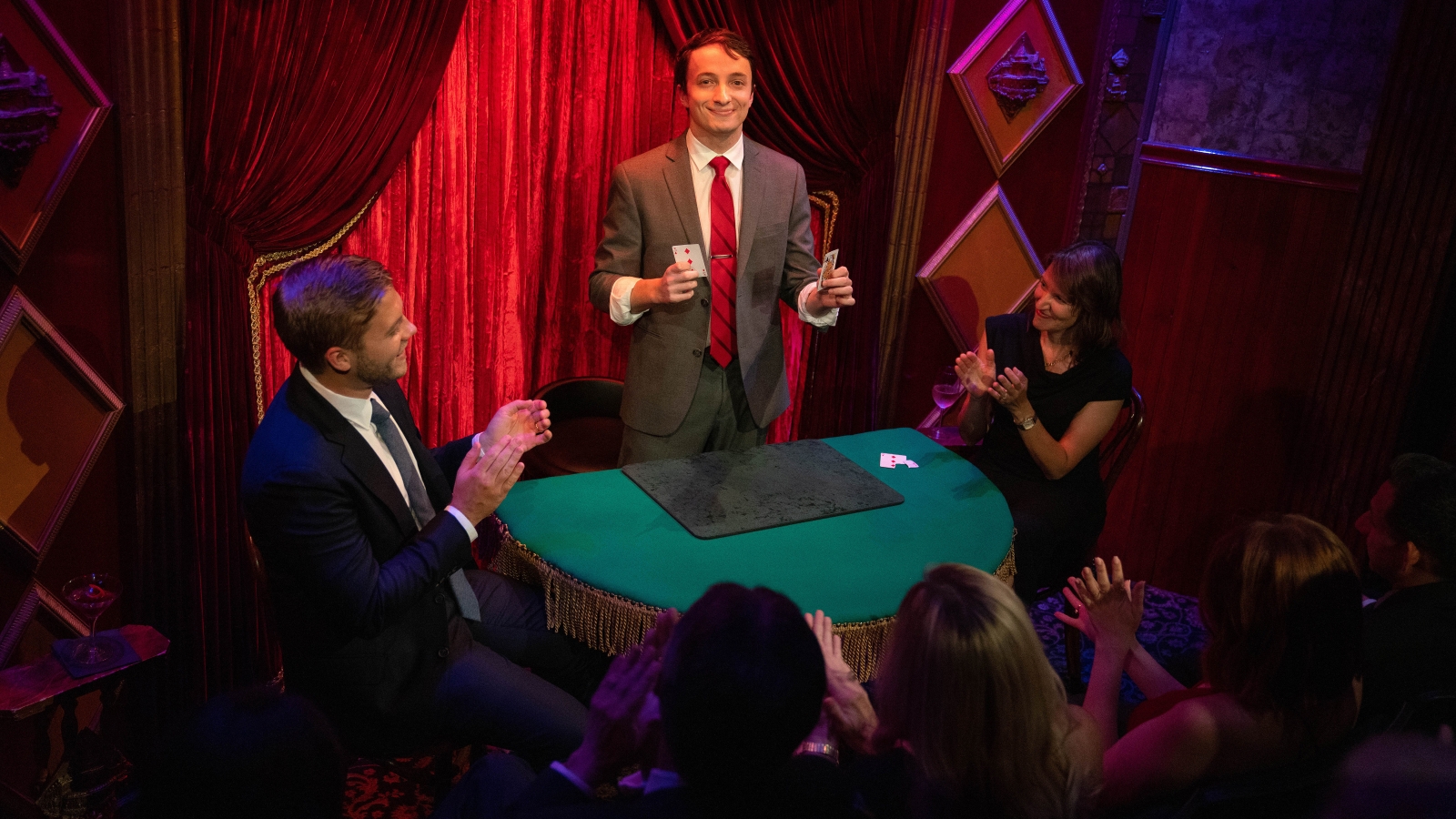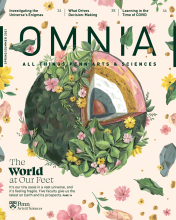Sleight of Hand, Sleight of Mind
An interest in magic influenced Daniel Roy, C’20, to study neurobiology. Now the magician is using his research background to amaze the audiences at his shows.

Daniel Roy, C’20, is a magician with an ace up his sleeve. Not only can he trick you, but he can also explain why your brain allowed you to get tricked.
In March, Roy, who’s performed at Hollywood’s Magic Castle and appeared on Penn and Teller: Fool Us, will present at a different kind of venue—the American Neuropsychiatric Association’s annual meeting—along with psychiatrist Barbara Schildkrout, M.D. and neurologist-psychiatrist Kathy Niu, M.D. When the researchers reached out to Roy, they were looking for a magician with a neuroscience background to demonstrate the concepts in their talk on the neuropsychiatry of magic. “Well,” he thought, “there’s my niche.”
A former biology major, Roy first noticed the connections between magic and neuroscience as an undergraduate. “It was interesting to be studying neurobiology as I was practicing a lot of magic,” he says, adding that all branches of magic play on human cognitive processes, but especially the sleight-of-hand techniques that he practices. For example, a magician might take advantage of a perceptual phenomenon called change blindness—when we fail to notice that something within our sight, like a playing card, has moved or changed in a subtle way—to swap a queen of hearts with a jack of clubs.
Roy switched into the neurobiology concentration in his junior year, but his interest in magic began long before. When he was 10 years old, he participated in a fundraising event for his former pre-school, where he met a magician who made a playing card, with Roy’s name written on the face, repeatedly rise to the top of the deck. “This was the first time I’d really seen close-up magic,” Roy says. “I had this very visceral experience of wonder. I don’t remember much about the tricks, but I remember the feeling.”
It was a feeling Roy knew he wanted to recreate for others. To find out how, he went to a magic shop in his hometown of San Francisco, where the shopkeeper, Roy’s first mentor, steered him toward a five-volume compendium on sleight-of-hand card tricks. He was hooked.
Over the next few years, Roy would practice after school and on the weekends, sometimes getting so engrossed that he’d forget to eat. When he moved to the East Coast for college, he continued his studies with magician and sleight-of-hand expert Darwin Ortiz in Washington, D.C.
Roy also joined Penn Illusionist, the magic club on campus, and later became its president. One of his first goals? Opening up the space to more people.
“I was thinking there’s no reason a priori that only guys should be interested in magic,” Roy recalls, noting the lack of diversity in the magic community historically. “What if we make it so that we start with a blank slate—not kicking everyone out—but what if we change the purpose of the club from a bunch of magicians hanging out and trading secrets, to teaching tricks to people who’ve never done magic before?”
At the Student Activities Fair that semester, Penn Illusionist signed up almost 80 interested students. While only a small group of the new recruits stuck with it, roughly half of the consistent members were women. To carry out the club’s new mission, Roy developed a curriculum and filmed videos for members to refer back to.
“At Penn, that’s where I learned how to teach magic. And that’s where I discovered that I just loved teaching it,” says Roy, who also led recitations for a genetics class as a teaching assistant during his senior year.
Today, these experiences carry over into his virtual shows, as well as the private lessons he teaches over Zoom. “That was definitely an interesting learning process,” he says, describing the changes he’s had to make to his shows since the COVID-19 pandemic hit halfway through his final semester.
Most important has been figuring out how to replicate the immediacy that first drew Roy to close-up magic. For instance, to mirror the experience of being at a live show for his audience, Roy uses a software that projects an image of the Zoom gallery view next to him. During his virtual shows—which range from small private events to ticketed shows with audience members from around the world to large corporate gatherings—he also makes sure to involve as many people as possible, even teaching the audience how to do magic with props in their own homes. A second camera gives a close-up shot of Roy’s hands, reassuring viewers that the magic they’re witnessing is not a camera or prop trick, but a trick of their brains.
“Magic is ultimately a process of sharing wonder with people,” Roy says. Though the pandemic has put on hold his plans to take his show on the road, for Roy, this process is still what inspires him to perform. For now, he’s working on a YouTube channel with tutorials for aspiring magicians and continuing to share the wonder of magic virtually.



